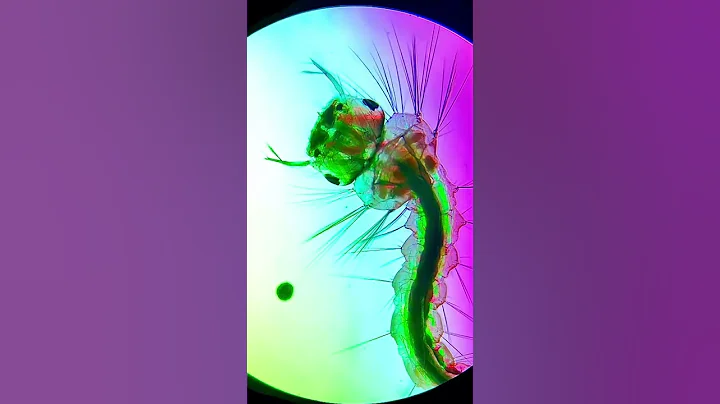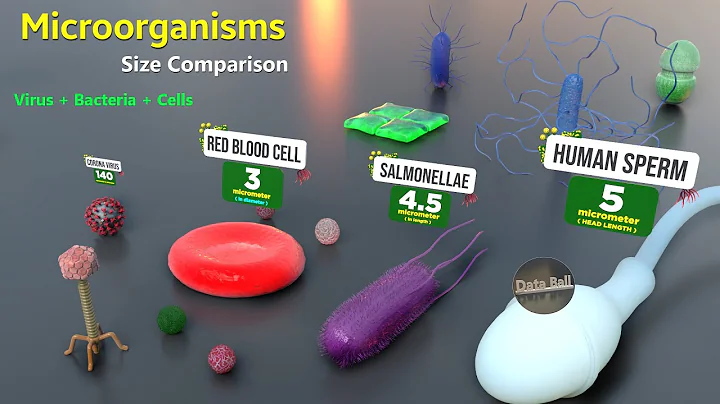In other words, in our past impression, bacteria are extremely small microorganisms, and we need to use a microscope that magnifies hundreds of times and a thousand times to see their appearance clearly.
However, recently, a new discovery may subvert past perceptions:
A recent paper published by French scientists confirmed that humans have discovered the world's largest bacteria - Thiomargarita Magnifica,
It can be called the world of bacteria The towering behemoth is 50 times the size of the largest known bacterium and 5,000 times the size of most bacteria.

How big is Sulfothococcus pallidum?
If you use a human analogy, ordinary bacteria see it, just like ordinary humans see a giant as tall as Mount Everest ...
People don't need a microscope, they can see it directly with the naked eye, just like a "glowing white..." pasta".
Comparison of Thielomonad orchid and coins

Because of its huge size, it has been misunderstood as other types of organisms over the years, and its true identity has not been revealed until now.
In 2009, Professor Olivier Gros from the University of the French Antilles and his team members discovered a long white creature in the mangroves of the Guadeloupe Islands in the Caribbean.

This is a creature that has never been seen before. It is about 1 cm in length, has obvious segments on its body, and emits a faint white light.
Now that they have grown to the centimeter scale, Professor Gros's first reaction at the time was:
It may be an animal, plant, or fungus...

Professor Gros immediately collected a batch of these white strip-shaped organisms, which were found in the mangroves. It is widely distributed on oyster shells, glass bottles, plastic bottles, and rope surfaces. Of course, the most distributed ones are on those plastic bags discarded by humans.

At first, Professor Gros' team was not very interested in this white strip-shaped organism. After the sample was observed in the laboratory for a while, many people believed that it was a kind of fungus:
"It's just a kind of fungus attached to leaves. , It’s just a long white fungus that lives on sediment.”
Because of the initial error in judgment, Professor Gros’ team was not active in researching the “white long fungus” and has not made much progress.

It was not until a few years later that team members noticed the unique cell structure of this organism. After further analysis and demonstration, Professor Gros came to a surprising conclusion:
This 1 cm long organism is not a fungus, but a fungus. It is the prokaryotes in our cognition - bacteria!
Professor Gros

Prokaryotes and eukaryotes exist in nature. The basic difference between them is whether they have nucleus .
Prokaryotes refer to primitive single-cell organisms that do not have a nucleus and DNA and other genetic materials can flow within the cell.
Bacteria, Mycoplasma , Chlamydia, Archaea are all such organisms. Their common characteristics are simple structure and extremely small size, usually between 1 and 10 microns...
Eukaryotes have a nucleus, and the nucleus has Film wrapped. It includes many organisms, including fungi (such as yeast), animals, plants, humans, etc. The common feature is that the nucleus in the body's cells is wrapped by a membrane. This structure can usually form more complex biological forms with larger sizes. Much more.
But now, Professor Gros' team has discovered a unique bacterium with a length of 1 centimeter. Not only is it huge in size, but its cell structure is far more complex than traditional bacteria.

Professor Gros’ team magnified the 3D scan of this bacterium and found that the cells of this very large bacterium have special membrane vesicles that can carry genetic material like pockets. This is similar to eukaryotes.

Since it is a bacterium, it should be named after a bacterium. While revealing its true identity, Professor Gros also finalized its name:
Thiomargarita magnifica.
This is a bacterium that can barely enter the human eye, and it is also the largest bacterium ever discovered by humans.
Even compared with the largest known bacterium, Thiophora of Namibia , which is 0.75 mm in length, Thiophora meliloti, which can grow up to 2 cm, is as big as a giant.
In addition to its astonishing size, the growth method of Thiolobicus orifolia is also relatively unique. It is distributed in mangrove areas. It uses the oxygen brought by seawater to oxidize sulfur-containing compounds in the sediment to obtain energy and maintain its survival.

In February this year, Professor Gros and his team wrote a paper on the discovery and research of Thiolobicus gorgeousi, which was published in a scientific journal not long ago.

The discovery of S. ornate also made biologists both excited and troubled. What is exciting is that the earth's creatures are so diverse, and S. ornate has developed such a unique form, which provides richer information for the evolution of organisms.
What is distressing is that in the future, the definition of microorganisms can no longer be measured by size:
A creature that is two centimeters long, visible to the naked eye, and shaped like white pasta (or bugs) may just be a "bacteria"...





















